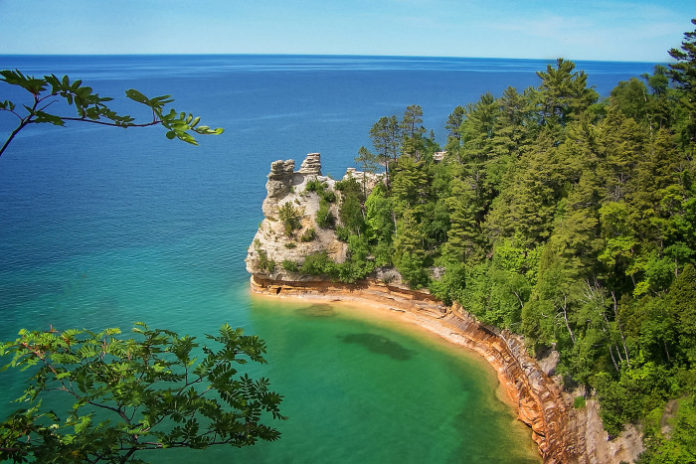Lake Superior is the largest freshwater lake situated in North America. Fresh water is naturally occurring water on Earth’s surface in ice sheets, ice caps, glaciers, icebergs, bogs, ponds, lakes, rivers and streams, and underground as groundwater in aquifers and underground streams. Fresh water is generally characterized by having low concentrations of dissolved salts and other total dissolved solids.
About Lake Superior,
The lake is shared by the Canadian province of Ontario to the north, the US state of Minnesota to the west, and Wisconsin and Michigan to the south. It is generally considered the largest freshwater lake in the world by surface area. It is the world’s third-largest freshwater lake by volume and the largest by volume in North America.
- Lake Superior empties into Lake Huronvia the Marys River and the Soo Locks. Lake Superior is the largest freshwater lake in the world in area (if Lakes Michigan and Huron are taken separately; see Lake Michigan–Huron), and the third largest in volume, behind Lake Baikal in Siberia and Lake Tanganyika in East Africa.
- The Caspian Sea, while larger than Lake Superior in both surface area and volume, is brackish; though presently isolated, prehistorically the Caspian has been repeatedly connected to and isolated from the Mediterraneanvia the Black Sea.
- Lake Superior has a surface area of 31,700 square miles (82,103 km2), which is approximately the size of South Carolinaor Austria. It has a maximum length of 350 statute miles (560 km; 300 nmi) and maximum breadth of 160 statute miles (257 km; 139 nmi).
- Its average depth is 80.5 fathoms(483 ft; 147 m) with a maximum depth of 222.17 fathoms (1,333 ft; 406 m). Lake Superior contains 2,900 cubic miles (12,100 km³) of water.
- There is enough water in Lake Superior to cover the entire land massof North and South America to a depth of 30 centimetres (12 in). The shoreline of the lake stretches 2,726 miles.
Lake Superior Facts,
Lake Superior is, by surface area, the world’s largest freshwater lake.The surface area of Lake Superior (31,700 square miles or 82,170 square kilometers) is greater than the combined areas of Vermont, Massachusetts, Rhode Island, Connecticut, and New Hampshire.
- Lake Superior contains as much water as all the other Great Lakes combined, even throwing in two extra Lake Eries. Its volume is second only to Russia’s Lake Baikal.
Lake Superior contains 10% of all the earth’s fresh surface water.
- There is enough water in Lake Superior (3,000,000,000,000,000–or 3 quadrillion– gallons) to flood all of North and South America to a depth of one foot.
- The deepest point in Lake Superior (about 40 miles north of Munising, Michigan) is 1,300 feet (400 meters) below the surface.
- Over 300 streams and rivers empty into Lake Superior.The average elevation of Lake Superior is about 602 feet above sea level.
- The Lake Superior watershed region ranges in size from 160 miles inland near Wabakimi Provincial Park to only 5 miles inland from Pictured Rocks National Seashore.
- The Lake Superior shoreline, if straightened out, could connect Duluth and the Bahama Islands.
- The average underwater visibility of Lake Superior is 27 feet, making it easily the cleanest and clearest of the Great Lakes. Underwater visibility in places reaches 100 feet. Lake Superior has been described as “the most oligotrophic lake in the world.“
- The lake is about 350 miles (563 km) in length and 160 miles (257 km) in width.In the summer, the sun sets more than 35 minutes later on the western shore of Lake Superior than at its southeastern edge.
- Lake Superior has over 400 islands, the largest of which is Isle Royale, with a size of 207 square miles.Waves of over 40 feet in height have been recorded on Lake Superior.
- Water in Lake Superior is retained, on average, 191 years.






